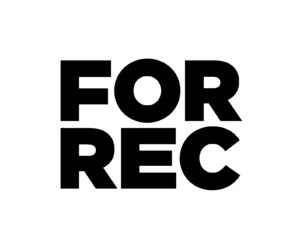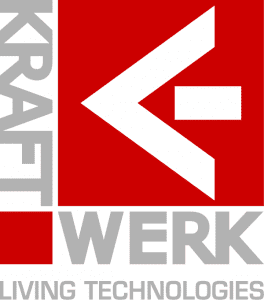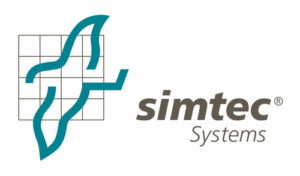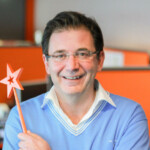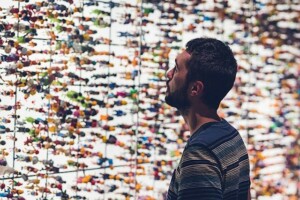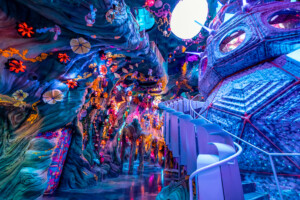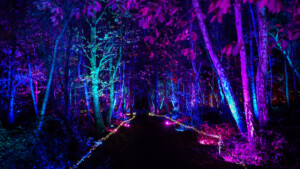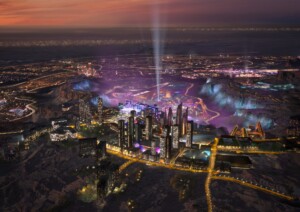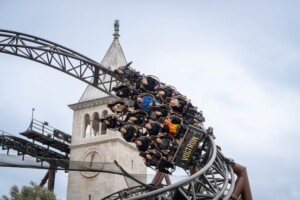From its architecture to its attractions, The Wanda Movie Park in Wuhan, China, boldly fuses culture and cutting-edge technology in every aspect of its design.
Six experiential theatres are stacked within the building’s complex shell, which is inspired by the Wuhan region’s Chu-Han bells tolling at a 15-degree angle.
The company entrusted with realising Dalian Wanda Group’s ambitious vision for the indoor theme park was entertainment design specialist, FORREC.
Having already won two design competitions for the Wanda group – theme parks in Xishuangbanna and Dalian – FORREC was the obvious choice to deliver the Wanda Wuhan Movie Park project.
.jpg) FORREC’s James Anderson was the project’s Lead Creative Director, responsible for providing creative oversight for the design development and construction documentation of the six media-based attractions.
FORREC’s James Anderson was the project’s Lead Creative Director, responsible for providing creative oversight for the design development and construction documentation of the six media-based attractions.
“We toured the Chairman around Florida and the many properties there, including Universal, to give him an overview of the industry, ” explains Anderson. “What began as a combination of rides and indoor attractions changed when the Chairman decided to focus on indoor media-based attractions only that would leverage the purchase of AMC.”
FORREC’s work involved coordinating three design/build vendors and five world-class media companies, combining media, special effects, highly themed show sets and lighting to tell original and engaging stories.
Anderson also acted as the Facility Design Manager for the concept phase of the project, integrating many attractions into the idiosyncratic, multi-story building.
He spoke to Blooloop about the evolution of the Wanda Movie Park project and, in particular, the creation of its signature ride, Hubei in the Air.
A Jack of All Trades
Anderson, whose father was involved in construction materials sales, was interested in architecture at a very early age. Anderson was also a budding storyteller, and would constantly be writing and illustrating stories to share with classmates and friends, something he now sees in his nine-year-old son.
When he was eight, Anderson visited Disneyland.
“I came out of it thinking – someone gets to design these. From then I would draw layouts of theme parks including an island with resorts, shopping, parks and living areas.
“Developing theme parks and attractions was a perfect marriage of my interest in the built form and the act of telling stories.”

Image kind courtesy Wanda Group
Studying Architecture at the University of Toronto, was the next step in his development, though his studies focused on the minimalist aesthetic of Mies van der Rohe and Le Corbusier, rather than the full immersive and thematic environments that captured his imagination. Graduating during the recession of the early 1990s, he was excited to work on and off at SimEx until learning about FORREC.
“FORREC allowed me to be a jack of all trades – from graphics to master planning to architecture, from interiors, to casinos, to water parks, resorts, visitor attractions and theme parks. This helped me in my variety of roles on the Wuhan project.”
His architectural background landed him the job of Creative Director for LEGOLAND Germany, responsible for concept development for the architecture, restaurant interiors and attractions of the park.
Six attractions into one building
His remit included directing the in-house design development team for architecture, show sets and graphics, with further duties such as art direction for architecture and attractions while the park was under construction. This, along with his experience of building system co-ordination, helped to jump-start his creative direction roles at FORREC.
Anderson’s role at Wanda Movie Park evolved with each phase of the project. It began with working out how to integrate six attractions into the unique form of the building designed by British firm, StuFish Architects.
“It was a puzzle to incorporate the attraction boxes and their ancillary programme with an organic enclosure, ” he admits. “There was considerable push and pull on both sides to accommodate the programme with the exterior shell.”
His skill at slotting the various elements together came in equally useful when dealing with the complex network of specialist teams involved in creating the attractions.
.jpg)
“In the schematic phase, I was Creative Director for three attractions – Hubei in the Air, Star Journey and Streets of Fury, leading the large teams for the development of each attraction.
“For the Design Build stage, as FORREC acted as executive producer, I was the lead Creative Director for all six attractions. I worked closely with the three creative directors who were responsible for two attractions each. I was the bridge between the physical construct of the design build vendors and the media companies. We worked alongside the Matilda Entertainment who were our media consultants and guided both us and our client through the process.”
Hubei in the Air
Hubei in the Air, now considered a signature attraction, evolved from the decision that one of the rides should be a Soaring or Fly Theatre type attraction.
What began as a general tour of the wonders of China became a ride that focused specifically on the province of Hubei with its particular culture and spectacular geography.
Tracking the region’s evolution, the ride would juxtapose the region’s history – such as the Battle of the Red Cliffs – with the modern, forward-looking metropolis of Wuhan.
The team researched key locations in the Hubei province, looking at ways to tie the experience together. The original concept, developed by Louis Alfieri of Raven Sun Creative, Rethink and FORREC, focused on The Wudang Mountains, considered to be the birthplace of martial arts. Zhang Safeng, who is viewed as the father of martial arts, was influenced by the way the crane and the serpent fight one another. So, the idea was that the participants would follow the crane and serpent symbols through time and through the mountainous geography.
.jpg)
Anderson takes up the story: “The crane then separated off from the serpent and became our guide, our centrepiece of the story. The crane, and the magic it possesses, carries through to the final attraction film.”
The serpent, however, was not so fortunate.
“Comments from the chairman after the concept phase resulted in the snake being dropped: there was a concern around people’s relationship with snakes.”
The World’s Largest Chinese Brush Painting
The idea formed to create the world’s largest Chinese brush painting, filling the entire screen, and then bringing it alive as the guests fly into it.
“The Chinese paintings, as we ebbed and flowed through them, was one way of making a flowing transition between the key scenes, ” says Anderson. “Other solutions included flying up into the clouds and then banking back down into a scene, or rising up over a ridge, a series of trees or through an explosion of plum blossoms.”
The story developed in stages.
The focus on martial arts was reduced to a smaller element – the pivotal sequence of the students and their master in the Purple Mountain courtyard. In the queue phase before the ride, guests are able to walk through two training rooms, the floors lined with training mats, martial art weaponry in carved stands; and banners hanging on the walls portraying the various poses of martial arts influenced by animal movements.
.jpg)
“Our earlier concept was to end on a symbol of the progress of Hubei province, the high speed train, focusing on a family as they traverse through the landscape, ” says Anderson. “On the train, a child is holding a toy of the viper and crane, tying back to the original beginning sequence.”
However, the client was clear that the attraction should end on the Wanda Movie Park building itself.
Enter the Wudang Mountains
“Changing the finale to the Bell Building, we created the idea of returning the guests directly back into their seats. The building magically dissolves as we fly above it and the living Chinese brush painting returns.”
The initial concept had envisioned the tour progressing from the natural geographical wonders of the province through to the historical ones and finally culminating in those of the present day. But, as FORREC worked with the client and Pixomondo in the following phase, the client wanted the sequence of the locations shots changed. The Chairman’s vision was a geographical based flight – a physical trajectory between the different scenes.
“As a solution to the request, it was proposed to come from a high elevation, the Wudang mountains, and then travel down to lower elevations – the final scene in Wuhan, ” says Anderson. “This allowed us to keep our queue design in the mountains and made sense to the story.”
.jpg)
The Battle of the Red Cliffs
Inevitably, some compromises had to made.
“One of the location shots we loved was the Chaibuxi National Forest, the stone forest that inspired the floating rocks in the movie Avatar. The ability to bank through and over these formations, would, we thought, be spectacular.
“As Pixomondo started their media development, it became clear that we could not afford to retain all the scenes, and, initially, the idea was that we wouldn’t include the Battle of Red Cliffs: instead, we would do an homage to it, rather than a full scene.
“However, it transpired that the Battle of Red Cliffs was a very important scene for the client so it had to be retained. And, in order to stay on budget, it was the Chaibuxi scene that ended up on the cutting room floor.”
The Battle of Red Cliffs, now a key scene, grew in significance. The attention to detail, from the boat design, the background environment, the time of day and even the directional flow of the river, were all meticulously researched and painstakingly designed to reflect the historical context.
The use of the crane, which acted as a magical host accompanying the guests on the journey, became very important…
“…because we needed a way to make these transitions seamless, and to connect the history and geography in a way that helped the story hang together.”
.jpg)
The Development of the Ride
Throughout the concept phase of the attraction, Anderson said FORREC worked closely with other companies to develop the overall thematic approach.
“Given the tight timeframe, we proposed that the attraction be a design/build. Our team would complete the schematic design of the attractions, developing comprehensive style guides and planning and technical packages. These would be used as bidding documents for design/build vendors who would complete the design with our oversight as client representative, then build and integrate the attractions with the ride and media vendors.”
In the schematic phase, which was a tight six months, FORREC assembled a stellar team to navigate through the schedule and the challenges ahead.
“The team hired was really the best of the best – real pros in their industries, ” says Anderson.
“We partnered with Super 78, lead by Brent Young, who had experience with the Fly Over China and America films, to help us with the media development, script, asset design, animatics and timing for Hubei in the Air.”
.jpg)
Super 78 Guides the Flying Experience
Brent Young, President and Creative Director, Super 78, explains his company’s contribution:
“Hubei is an area of incredible beauty, history and culture — telling these stories was a unique opportunity for Super 78 to work with one of the best design firms in the world, (FORREC) and the fastest growing film exhibitor in the world (Wanda) to help guide the development of this flying experience.
“We came on board during the conceptual development and storyboard phase, working with FORREC to flesh out the film’s rich narrative and VFX/CG enhanced shot transitions. We also produced the show’s unique tech and show script and, along with the storyboard animatics, provided a conceptual DVD.
“FORREC had an amazing vision for the experience, ” adds Young. “We simply enhanced the assets they had developed to shape a compelling and truly unforgettable flying attraction.”
Kraftwerk and DSL Join the Team
Anderson: “At this point, DSL was engaged along with Kraftwerk and we started our discussions with them around the technology of the ride.”
While they had built the original Soarin’ hardware for Disney California and EPCOT, the ride system for Wanda Wuhan was brand new, this would be its first installation.
.jpg)
“Both DSL and Kraftwerk Living Technologies were great to deal with, ” says Anderson. “Super 78 was knowledgeable about the parameters of the attraction given their previous experience. With their guidance, we were able to modify the seat canopies to limit the guest view of the top of the screen, which would have taken them out of the experience.
“As for the set development, Adirondack and their team were exemplary to work with. Louis Allen, Vice President Creative, Seth Harkins the Creative Director and their team, took our 3-D SketchUp models, renderings and elevations and developed a comprehensive package which integrated all of the special effects, lighting and A/V rigging systems.”
FORREC – The Keeper of the Story
At this point, FORREC became executive producers, acting as the keeper of the story and the liaison between the many creative teams and the client.
Anderson said, “Being executive producer means treading a fine line between keeping the torch of the original design intent, while still allowing and facilitating the creativity and freedom of the design partners. It was fortunate that Adirondack won the bid as design/build vendor; because of their attention to detail and sheer craftsmanship, the queue and pre-show are beautifully detailed.
“We worked hand in hand with Matilda Entertainment, headed by Doug Yellin, who assembled his team. They were amazing setting up the deliverables and expectations of the client.”
.jpg)
Formidable Challenges
Quite apart from the story creation, there were formidable challenges to be addressed.
“We needed an interesting queuing system to get people from the attraction entrance at the central atrium to the attraction boxes positioned at the end of the building. … We needed to split up the queue visually, so it turned into a sequential series of spaces, from the pathways of the Wudang Mountains to a Temple Courtyard, through the training rooms before the guests reach the escalators to take them up to loading level.”
The second challenge was the fact that the theatre load deck changed from the ground level where guests would be lifted into the projection sphere, to one that is loaded at screen level and indexes/tilts into the projection sphere.
“Suddenly we had to get guests from 0 to 8.80 m above the floor. We were constrained by the width of the building as dictated by the site. Pre-shows had to be on the upper level where the attraction loading would occur.
“We looked at different scenarios of how to get guests to the upper level, and finally settled on two parallel escalators.”
(1).jpg)
Image kind courtesy Stufish Architects
To keep this within the parameters of the fantasy, the story was modified to encompass the notion that the guests had travelled up to the plateau of the mountain to reach the main hall where the painting was kept.
Good vibrations
A further challenge was that the six attractions in the movie park needed to stack on each other – the first time this had ever been done – without vibrations from the rides affecting the other experiences (quite a feat considering all of the live loads in the building).
“Hubei in the Air was the only attraction to have issues with vibration. The central projector, which is mounted to a platform that is suspended from the ceiling, focuses on a mirror that projects the image to the 10 metre screen.
According to Anderson, “At first, we didn’t know what was causing the lack of clarity in image. The client was concerned that the media might be the issue. David Kenneth of Matilda Entertainment took the client behind the screen, which was showing a still image, and we could actually see the vibration. Since it was a still image we knew the projector was moving. Additional structural bracing was brought in to correct the issue.”
Timing was the next challenge.
“Foundations were being formed as the schematic phase of the development was underway so we had to assemble the ‘worst case scenarios’ in load conditions for the structural engineer to develop the size of piles required to hold up the building on reclaimed land along the lake, ” explains Anderson.
“This extended to electrical and mechanical loads. Facility inputs from the rides, show sets and technology needed to be coordinated and sent to the local engineering teams. TWT (the TWT Group) was valiant in this effort to assemble all of the information from the sub-consultants. They strategized at our first kick-off meeting in schematic how best to assemble and collect the information and deliver to our client.”
(1).jpg)
Culture Vultures
As a group of North American designers, the team had to quickly come to an understanding of another culture.
“We had to immerse ourselves in and study everything from Chinese brush painting, to martial arts, to Chinese history to architectural details. We are fortunate that our office is based in Toronto, where there is a multitude of different cultures in the city.
“A Chinese committee was set up to review storyline and details to make sure we were not off message and that we understood the nuances.
“Adirondack had their own Chinese architectural expert hired to develop the details of the show sets. We had a great deal of back and forth to make sure that we were representing the architecture of the Purple Mountain Palace.
“As Adirondack set up their efforts with Xiandai during the design development stage, we had another set of eyes reviewing the design.
“We tried to catch everything, though one element was missed by the reviews: a bronze bell. The bell was found on the terraces of the Purple Mountain Palace, and was heavily researched and drawn. Its placement was used to limit the views from the Wudang mountain queue into the Courtyard queue but, as Xiandai came on board, they let us know that placing a bell in this way is considered bad luck, and instead suggested a funeral urn in the location. It included smoke SFX and lighting, and turned out to be a better solution.”
A Multisensory Experience
Throughout the attraction, technology, art and multisensory effects interact to create an immersive experience.
“It’s about engaging the guests with as many senses as possible, from visual, to sound, touch and smell.”
One microcosm of how technology and art interact, and how many senses are addressed, can be found in the queue.
“To help guests become quickly immersed in the environment of the Wudang Mountains, having just come from the huge bustling atrium of the movie park, we created two waterfalls. The sight and sound of the falls would envelope the visitors.”
.jpg)
“The falls were originally interactive screens where the waterfall would stop as the guests approached it, allowing guests to paint with Chinese brushstrokes among the plum blossoms. Due to budget constraints, the interactivity of the screens was dropped but the projection of a large waterfall cascading over the rocks remained.
Shadow of a crane
“We did many mock-ups, sculpting the edges of the rockwork so that the projection cone made a believable shape. Pixomondo developed many tests, calculating the height of the waterfall to get the scale and speed of the water passing over the rocks. Photos of the mock-ups of the rockwork were sent to the media team to make sure the colour and texture of the media projection worked closely with the final finish of the sculpted rockwork. The projection image was masked to the edges so that the projection did not overlap on the rockwork.
“The waterfall was integrated with effects: we re-located some of the MeeFog nozzles at the base of the projection to replicate the mist of the fall.”
The sound of the waterfall came from speakers mounted in a cavity at the base of the projection screen, so that guests would hear the sound coming from the splash location.
“To evoke the main film, we added the shadow of a crane passing over the second waterfall: a bit of magic, to give a glimpse of what is to come, ” says Anderson.
In the main theatre, at the visual end of the sensory spectrum was the quarter dome screen, encapsulating peripheral vision from side to side and below, while the canopy limited the audience view to the top edge of the screen, preserving the suspension of disbelief.
Traditional Chinese Instruments
“Brian Yessian of Yessian Music developed a score using traditional Chinese instruments. It was important to the client that the film’s music had a historical feel.
The music at the beginning is light, as we float through the air – augmented by the sound of the wind. This reinforces the idea that we are flying into the Chinese painting.”
The music builds up as the ride comes to the Purple Palace sequence in the Wudang mountains.
“We wanted to take advantage of the 17:4 Surround Sound that was provided.”
Immersing the guests in scent proved tricky and a matter of trial and error.
“Scent samples are difficult to understand on their own. The key scent for us was the plum blossom, as it carried throughout the film.”
The water spray needed to be used strategically – and sparingly.
“There is nothing worse being on a ride that consistently sprays you in the face, or, worse, drips on you continually. The Three Gorges dam scene was perfect to integrate the effect.”
Pixomondo leads film production
Originally, it was planned to use live image capture for the Hubei scenes, which would be intermixed with CGI for the crane, the Chinese painting transitions and the effects.
However, it proved unfeasible.
“Flying helicopters over China requires approval from the military and can be difficult. We would have never received the go ahead to fly over the Three Gorges Dam, for example.
“Secondly, the environment in China is not conducive to live action shots: the filming would have been extremely difficult to schedule, since we would have been hampered by haze and pollution. Trying to find the right light for the shoots would also have been on a trial and error basis and would have cost enormous resources that we didn’t have.
“Finally, with the key ending scene set in the completed Wanda development, that scene would have had to be constructed digitally regardless as the whole area was under construction while the movie was being developed, including the key frame of the Bell building.
The benefits of digital
“Pixomondo had proposed to develop the entire film digitally. Recently they had completed the Martin Scorsese’s first digital film, Hugo, which was completely shot and rendered digitally. To be honest, initially I was sceptical: part of the beauty of a Fly Theatre film is the majesty, the warmness of the film that the guest experiences.”
But, Anderson was persuaded.
“Pixomondo did a test reel showing the ability to develop digital assets using geographic references. Textures, assembled from high res photos, were then mapped out on the surface model, making them very realistic.
“Our team’s biggest creative challenge was to produce an audience experience in which the viewer would be captured by the breathtaking sights of Hubei Province, ” said David Garber, Executive Producer, Pixomondo. “We did this while staying true to the script and vision supplied by FORREC as our roadmap in creating the film for this attraction.”
“Doug Yellin of the Matilda team initiated the discussion of what percentage of ‘realness’ we could achieve – how close could we get to being realistic within the budget, and how we could transition from the painting to the real scenes. We looked for a sweet spot that allowed enough contrast and believability that we were actually flying above these amazing environments.
“There were so many advantages to digital that David Garber Executive Producer, Yas Takata, the director and BJ Farmer, VFX Producer used in the production of the media.
Contolling the sun at Wanda Movie Park
“First, we had complicated flight paths that would be next to impossible to complete with live action shots. Flying through the doors of the temple or sailing up to the sun, were afforded by going completely CG.
“We were also able to produce multiple flight paths which could be reviewed by the client. If we had gone out and filmed the scenes we would not have been able to alter the paths once they were recorded.
The Three Gorges dam flight path was altered to the extent that we were able to get the guests right down into the spray of the dam.”
Another major factor was lighting, and the ability to control the sun.
“Our idea of the media was travelling through Hubei on a daily cycle. The queue sets us up that we are on the mountain, just as the stars begin to fade to the rising sun. The pre-show evokes the dawn early light. The media starts in the morning and cycles through to the night.”
.jpg)
Hubei in the Air – the Park’s Most Popular Ride
Hubei in the Air has proved to be the most popular attraction at Wanda Wuhan, with the longest line-ups. It is spectacular in an unusual way. It moves away from adrenaline and excitement towards a dreamy, experiential, contemplative feel. There is an immersion in the beauty of Hubei’s past, in an exploration of both the cultural and the geographic landscape.
Considered in the light of the Wanda Wuhan Movie Park’s complete offering, it is a perfect balance to the other higher octane rides. Guests return: there is so much detail in the movie that it stands repeated viewings.
“This attraction is about wonder and inspiration, ” says Anderson. “It’s also a shared family experience. It is also a unique way to learn the history of an area – for both local people and tourists.
“As a media-based ride, it is a huge success and exactly what the client wanted.”
A First-Rate Experience
The final words are Frank Weigand’s, President, TWT Group:
“When a client is new to the theme park business, we are sometimes a little apprehensive about getting involved. However, when we walked into the first meeting and saw the stellar team that FORREC had assembled, we knew it was going to be an interesting and successful project. The breadth of the project and the tight schedule required that we all bring our best game. We have to give enormous credit to the ride vendors: Dynamic Attractions, ETF, Simtec, Simex, etc. for helping us define the ride requirements and to FORREC for pulling it all together into a first-rate experience that we can all be proud of.”
(1).jpg)
Five Further Attractions at Wanda Movie Park
Hubei in The Air shares the bell building with five other cutting-edge attractions:
1. Star Journey
A vehicle based simulator attraction, Star Journey imagines the Chinese Space programme in the future. The guests find themselves on the platform of a Chinese space station as the next wave of space cadets. A probe has been sent into a black hole and has been lost. This, along with two other ships (there are three simulator theatres provided by SimEx), venture into the black hole to retrieve the lost probe. There are multiple sequences of the story, with two sets of chapters with three stories each. Thus guests can experience a different story sequence each time they ride.
2. Streets of Fury
Situated above the queue for the Hubei in the Air and the Star Journey attraction, is the 4-D high thrill theatre, Streets of Fury – a fast paced race through the crowded streets of Shanghai. The adventure starts in a market, where media reports on the various televisions announce both the release of a dangerous thief and the unveiling of a priceless treasure at a museum. In the pre-show guests meet the hero along with his girlfriend. At gun point, he is forced to release his prized car, which will be used as a getaway car for the museum heist. Guests enter the 400 seat main theatre, along with the main characters that are shown on the screen.
3. Journey to the West
Across the atrium from Streets of Fury is Journey to the West, an interactive dark ride based on the famous Chinese fable of the Monkey King. The queue traces the history of the Monkey King, from his birth out of a rock to being enslaved under a mountain. The attraction itself is a game where guests enter a ride car and move from station to station battling demons and scoring points as they fire fanciful ammunition from their special Monkey King bag of tricks. The intent of the attraction was to be historically accurate as well as fanciful and fun for the players. Each player has a unique experience and the outcome of each visit to the attraction is different depending on the skills of the players. At the end of the ride, the scores of each rider are displayed with captured photos of the players.
4. Ultimate Energy
On the top level of the park is Ultimate Energy. This is a 3-D wrap-around screen theatre with live stunt actors and special effects interacting with the media. The premise starts as the guests enter into a lobby of a new museum, commemorating man’s victory over machine in the near future. They learn of the hero of the war, who sacrificed himself for victory over the villain who masterminded the rise of the machines. Guests go through an elaborate queue set up as a series of exhibits, into a pre-show. In the huge 500 seat main theatre, they are introduced to the ‘Source’. This is an energy that caused the rise of the machines. Long thought dead, the villain and hero return in front of their eyes, battling it out on stage and onto the massive screen. The pinnacle of the attraction is the leaping of a motorcycle out of the media, over the audience.
5. Power of Nature
Across from Ultimate Energy is Power of Nature. This is a disaster themed motion platform, the largest of its kind at 72 seats. Guests arrive in the lobby of the EWA – Extreme Weather Agency – who track Earth’s volatile weather patterns. They are to ride in the EWA’a latest vehicle, protected by a shield that will save them from the elements. The adventure comes across a violent typhoon, an earthquake, a volcanic eruption and a tsunami. Guests make it back to the city’s EWA sub-station, and the door closes just in time.
Who Did What – Hubei in the Air Attraction
Concept phase – FORREC, Raven Sun Creative, and Rethink.
Schematic Phase – FORREC developing creative and media/ story development alongside Super 78. Ride/attraction engineering by the TWT Group. Show set development Adirondack Studios, Lighting Design by Visual Terrain, Rigging design by LA Propoint. AV design by Entertainment Techknowledgy, SFX Design by AET, Graphic Design by WrenHouse Design. Costing by Cormier LLC and scheduling by Cumming, Gina Yu Project Manager; Electrical Engineering by Bill Gnan.
DBV vendor – show sets, technical integration and supervision: Adirondack/ Xiandai. Media Production: Pixomondo, Media Consultant: Matilda Entertainment, Ride Platform DSL; Theatre screen/A/V equipment Kraftwerk; Music Composition and Sound: Yessian Music.
All unattributed images kind courtesy FORREC


